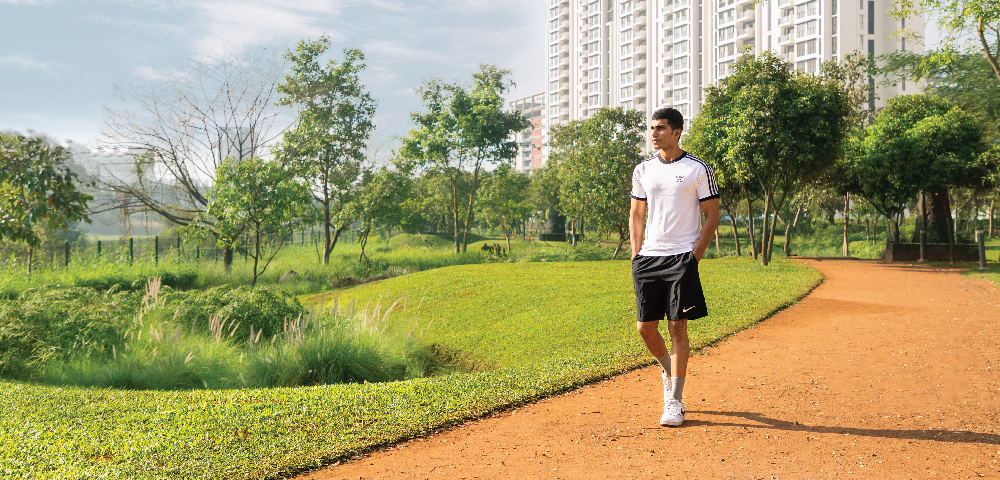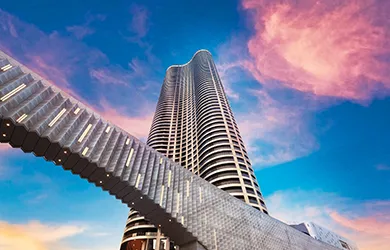- Our Story
- Our Impact
-
Our Projects
Residential
Commercial
- Careers
Cooling Our Cities: Addressing the Urban Heat Island Effect
By Lodha
November 08, 2024
As cities continue to expand, one pressing issue is emerging: the Urban Heat Island (UHI) effect. This phenomenon sees urban areas becoming significantly warmer than their rural surroundings, often by 2 to 5 degrees Celsius. In countries like India, where urbanisation is rapid, understanding the UHI effect is crucial for fostering sustainable and healthy living environments.
The Challenge of Rising Temperatures
Urban environments are often plagued by higher temperatures due to several interrelated factors. First, common materials like concrete and asphalt absorb heat throughout the day and release it slowly at night. This process keeps cities warmer than their rural counterparts. Moreover, the lack of greenery and water bodies, which naturally cool the atmosphere, exacerbates the problem.
Human activity also plays a significant role. The concentration of vehicles, air conditioning units, and industrial facilities generates additional heat, further elevating urban temperatures. Additionally, densely packed buildings create “urban canyons” that trap heat and hinder airflow, leading to poor ventilation.
Consequences for Urban Living
The UHI effect has far-reaching consequences on urban living. One major concern is the deterioration of air quality. Higher temperatures contribute to the formation of ground-level ozone—a harmful pollutant that can trigger respiratory issues and exacerbate health problems, particularly for vulnerable populations like the elderly and children.
Beyond health implications, the UHI effect disrupts local ecosystems. Warmer urban microclimates can threaten plant and animal species, altering food chains and disrupting migratory patterns. This loss of biodiversity can degrade the ecological health of cities, making it more challenging for urban green spaces to provide essential services like air purification and cooling.
Economically, the UHI effect has profound implications. Heat waves can reduce productivity, particularly affecting those in the informal sector who work outdoors. This can lead to lower incomes and exacerbate existing socio-economic inequalities. Additionally, increased demands for water and energy further strain already limited resources, creating a cycle of challenges that cities must navigate.
Innovative Solutions
Despite these challenges, there are effective strategies to combat the UHI effect. At Lodha, we are pioneering innovative practices in our projects, especially at Palava City. Embracing Reflective Materials
One effective strategy is the use of reflective materials in construction. High Solar Reflective Index (SRI) materials for roofs and building exteriors can significantly reduce heat absorption. This not only keeps buildings cooler but also lowers the demand for air conditioning, thus reducing energy consumption and reduced carbon footprints.
Increasing Green Spaces
Expanding urban greenery is another crucial strategy. At Palava, we have planted over 32,000 trees, featuring a diverse range of species. These green spaces offer shade, improve air quality, and contribute to cooling through evapotranspiration, creating a more pleasant urban environment.
Integrating Water Features
Incorporating water bodies, such as ponds and fountains, is another key tactic. These features help create cooler microclimates by absorbing heat during the day and releasing it slowly. This not only moderates urban temperatures but also provides aesthetic and recreational benefits, enhancing the overall quality of life in the city.
Thoughtful Urban Planning
Our approach to urban design focuses on optimising the orientation of buildings and road layout to enhance natural ventilation and shaded areas. By strategically planning the block layouts and incorporating shaded courtyards, we can improve airflow and reduce heat retention, making the urban environment more comfortable and livable.
Since 2008, our efforts at Palava City have resulted in an impressive 7-degree reduction in land surface temperatures by 2023, making it significantly cooler alternative to neighboring areas. This achievement highlights the effectiveness of sustainable urban design and climate-conscious planning in creating more comfortable and livable cities.
A Sustainable Future for Urban Living
The UHI effect is a significant challenge that cities face, but it doesn’t have to dictate our urban future. By embracing sustainable design and innovative planning, we can create cities that thrive despite rising temperatures. At Lodha, we are committed to building urban environments that not only prioritize comfort and livability but also serve as models for sustainability in urban development.
Together, we can reshape our cities into cooler, healthier, and more resilient spaces for future generations. Let’s take action today to ensure our urban landscapes flourish in harmony with nature.
You may also like



 Enquire
Enquire
 Call
Call
 chat
chat
 Search
Search




